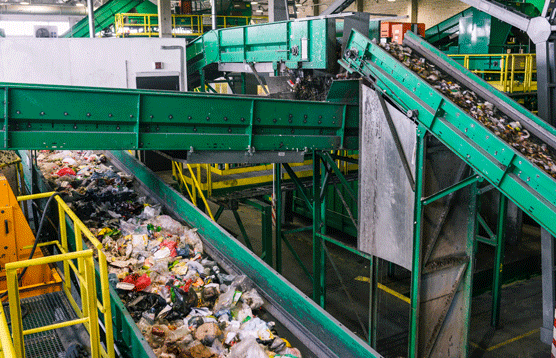The interest in municipal mixed waste facility sorting and the role of plastic recycling in increasing the recycling rate of municipal waste has arisen both in Finland and elsewhere in Europe. Finland is significantly behind the recycling targets set by the EU for municipal waste and plastic packaging waste, and there is a need for new recycling-enhancing solutions.
There is extensive national and international interest in separating plastic from mixed waste through facility sorting
Projects focused on plastic recycling, such as MSWPlast (Recycling Plastics from Mixed Waste) and PlastLIFE (Re-thinking plastics in a sustainable circular economy), jointly organized an international webinar on developing municipal mixed waste recycling through waste sorting facility (Raising recycling by sorting plastics from mixed municipal waste) on March 6, 2024.

© Photo: Adobe Stock
During the webinar, speakers generally agreed that the starting point for sorting facility before incineration should be directing all recyclable waste to recycling instead of incineration.
When building a system where plastic is separated from mixed waste and sent for recycling, it is essential to consider the entire waste management context, including its impact on the economy, policy environment, environmental sustainability, and other system components such as source separation and citizen participation.
While waste sorting facilities are seen as complementary to source separation, waste policy has not yet incentivized for sorting facilities. The MSWPlast and PlastLIFE projects are investigating its possibilities and profitability for increasing the recycling rate of municipal waste.
Over 210 interested participants from 30 different countries attended the webinar, where presentations covered various perspectives on separating plastics from mixed waste and experiences with facility sorting in the Netherlands and Sweden.
More information:
Co-ordinator Annika Markuksela and senior co-ordinator Hanna Salmenperä, Finnish Environment Institute, first.lastname@syke.fi
Links
PlastLIFE project web site plastlife.fi/en
MSWPlast news (vttresearch.com)
Read more:
The highlights from the webinar presentations
Sorting Experiment
Researchers conducted experiments in the MSWPlast project, where they separated plastic from mixed waste at a sorting facility. The project aims to demonstrate the potential for recycling separated plastics. Collaborating with Remeo Oy, they sorted approximately 500 tons (equivalent to 100 waste trucks) of mixed waste.
Preliminary Results
Malin zu Castell-Rüdenhausen from VTT (Technical Research Centre of Finland) presented preliminary results regarding composition analysis and the impact of plastic separation on waste incineration. The final results are expected later this year.
Policy Measures and Incentives
Riitta Levinen from the Ministry of the Environment emphasized that separating plastic and metal from mixed waste before incineration could complement source separation and separate collection. However, this should not come at any cost. Separate collection remains a priority, as mandated by waste legislation. While waste policy has not yet incentivized sorting facility, the door is open to new methods to achieve recycling goals. It is crucial to ensure that these new approaches are environmentally sustainable, maintain motivation for sorting and separate collection, and preserve the quality of recycled materials.
Experiences from the Netherlands and Sweden
The framework of EU waste regulations allows member states to pursue recycling targets through various means. During the event, interesting insights were shared based on the experiences of two quite different regions—Netherlands and Sweden—in municipal mixed waste facility sorting.
Banzo, a Dutch system integrator, has been actively involved in constructing several mixed waste sorting facilities. In Sweden, a facility example is operated by Sörab, a company owned by 10 municipalities, covering the sorting of mixed waste for approximately 540,000 residents.
Both presentations emphasized the importance of collecting recyclable plastics for recycling rather than incineration, highlighting the environmental benefits and emission reductions associated with this approach.
Sorting Facility as a Complement to Source Separation
During the event, lively discussions took place both in the chat and during the presentations. Various perspectives were raised, including environmental sustainability, the recycling potential and technology for recovered plastics, and their suitability for different applications.
Comments also touched upon the interconnections between mechanical and chemical recycling and the impact of facility sorting on waste incineration.
The role of facility sorting as a complement to source separation was a topic of discussion, along with the need for ongoing incentives to promote source separation.
In the context of mixed waste sorting, it is crucial to promote the sharing of open information to achieve our goals. There was unanimous agreement that the event served as a welcome starting point for further discussions and actions in this field.